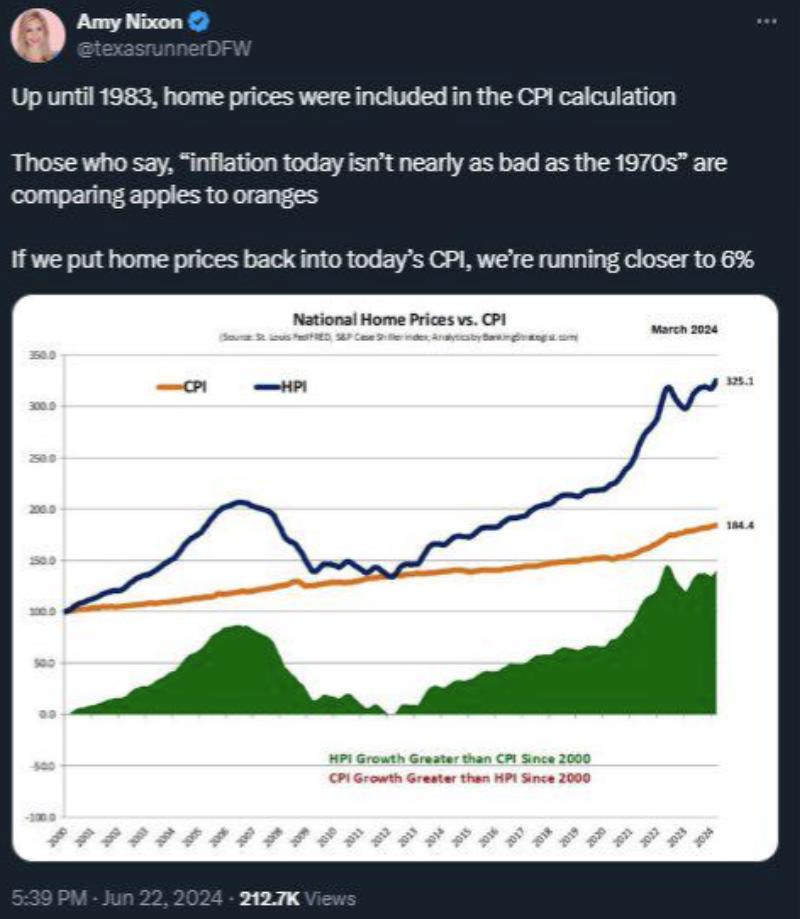
In the calculation of the Consumer Price Index (CPI), housing plays a significant role. However, the Bureau of Labor Statistics (BLS) does not directly include house prices in the CPI market basket. Instead, they focus on measuring changes in the cost of shelter for renters and homeowners. Here’s how it works:
- Rental Properties:
- For rental properties, the BLS considers cash rent paid to landlords (including utilities) and any government subsidies paid on behalf of tenants.
- They collect rent data for approximately 40,000 residences through personal visits or telephone calls.
- Owner-Occupied Homes:
- If a unit is owner-occupied, the BLS calculates the “Owners’ Equivalent Rent” (OER).
- OER represents what it would cost to rent that home in the current housing market.
- Utilities paid by homeowners are measured separately in the CPI.
- Why OER Instead of House Prices?
- The CPI aims to capture changes in the consumption value of a home (the shelter it provides) rather than the outright value of the home.
- OER reflects the rental value of an owner-occupied home, considering what someone would spend to consume the same housing services provided by their home.
h/t Fun_Balance_1809